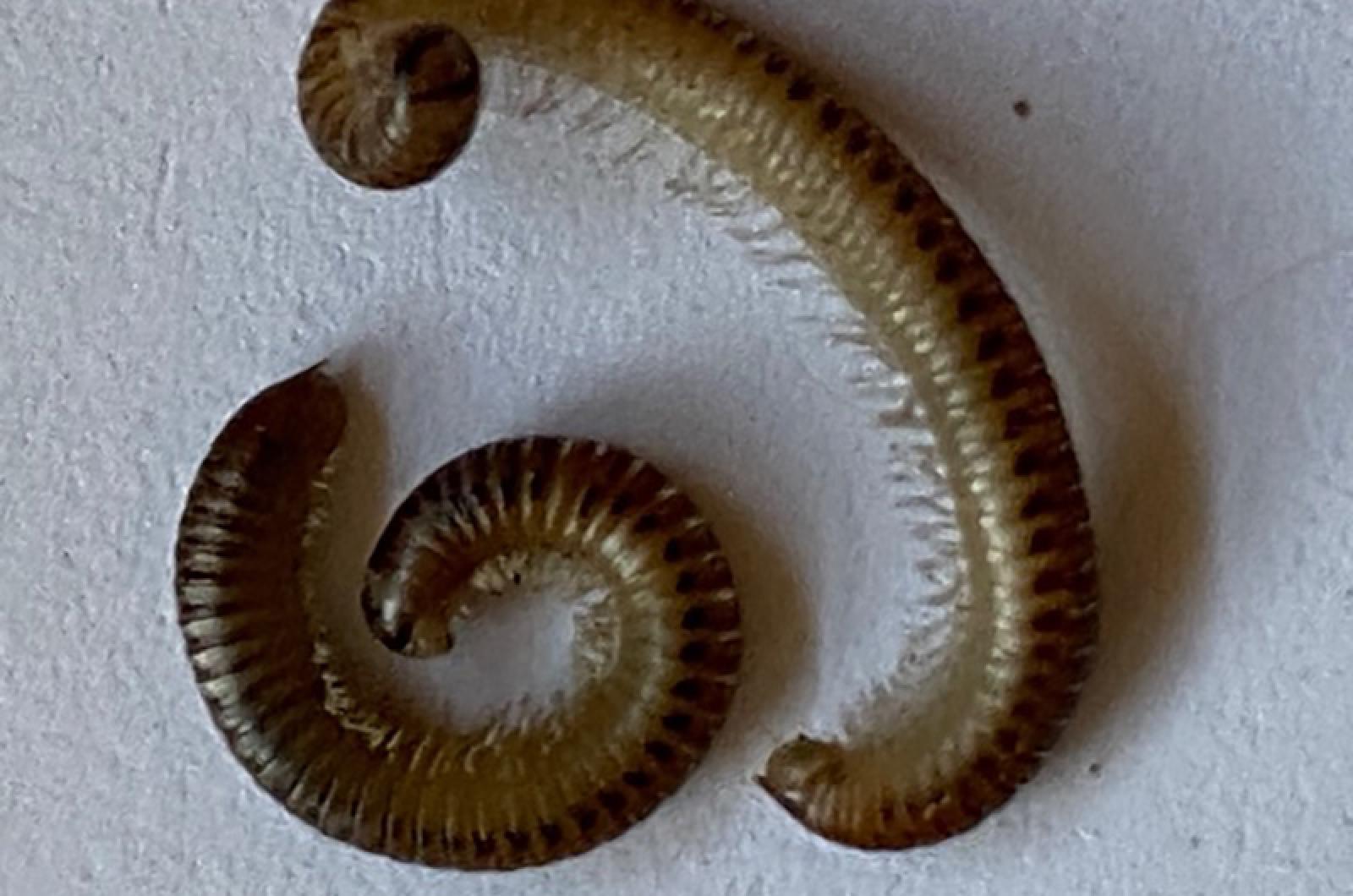ZZ Top’s 1983 hit song has been replaying in my head this week after a hearing about a backyard wildlife encounter. The song’s refrain is: “She’s got legs, she knows how to use them.”
Millipedes are leggy lads and lasses, and are back after a winter of hibernation. Susan Straight of Chilmark reports a mess of multi-legged millipedes curled up near her outdoor shower and on her deck. Though their name indicates “thousand,” none of the species of millipedes boast that many limbs. A more typical range is 50 to 375 pairs of appendages, with a record number of 750 for one species.
These legs, a pair per section, are found on the underside of each body segment. Each pair moves in concert, and subsequent pair movement allow for wave-like locomotion in many directions — forward, backward, side by side, and down for burrowing. However, speed is not achieved with these lithe legs, as millipedes are known for their sluggish pace.
The North American millipede is our local species and, luckily, is significantly less destructive than other millipede brethren. Amy Steward, author of Wicked Bugs — The Louse that Conquered Napoleon’s Army and Other Diabolic Insects, innocently asks: “So what’s not to like about these peace loving vegetarian recyclers?”
She shares a tale about hordes of another variety of millipede stopping a train in its tracks in Tokyo in 2000, when the animals were crushed and created a “wet squishy mess” that made the trains wheels slip. A true millipede massacre.
“Small in size but great in importance” is how Dr. Andrew Moldenke, a diplodologist (person who studies millipedes) describes them. As detritivores, millipedes eat decaying material and act as nature’s recyclers. They are also coprophages, eating their own waste to re-digest nutrients not absorbed the first time around.
And while most millipede species won’t eat us or other live prey, they can cause other concerns. As a protective measure, millipedes can curl up for protection, but can also defend themselves by secreting chemicals that can cause skin burns and eye irritation.
More millipedes are coming, since they are starting their breeding season. Fortunately, they do not have masses of millipede babies. The North American millipede female lays one egg after being encouraged by the male, who walks along her back to stimulate her. She then curls her body around the egg to protect it ahead of hatching. Once hatched, mom leaves the new millipede to its own devices, and it will reach adulthood after one to two years if it survives to maturity.
You will likely continue to find these crawlers in the moist places in your yard through the season and will now, like me, also find it difficult to stop singing that ZZ Top song every time. Sorry about that — I guess that the melody, along with those millipedes, has legs.
Suzan Bellincampi is director of the Felix Neck Wildlife Sanctuary in Edgartown, and author of Martha’s Vineyard: A Field Guide to Island Nature and The Nature of Martha’s Vineyard.







Comments
Comment policy »